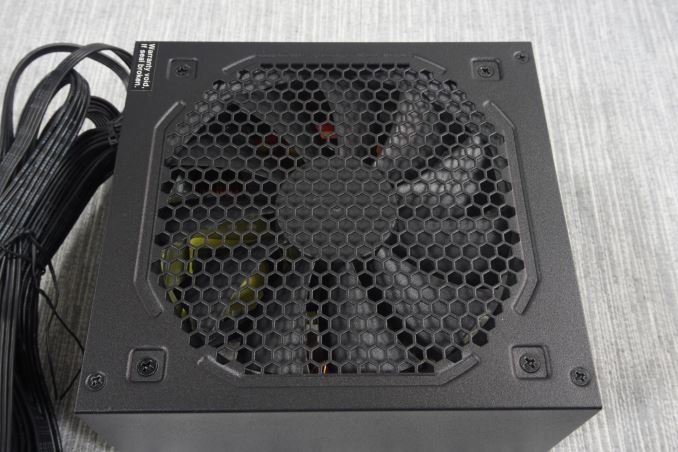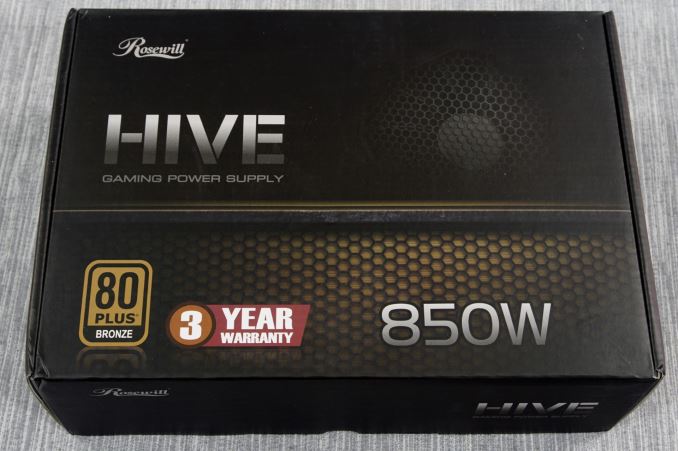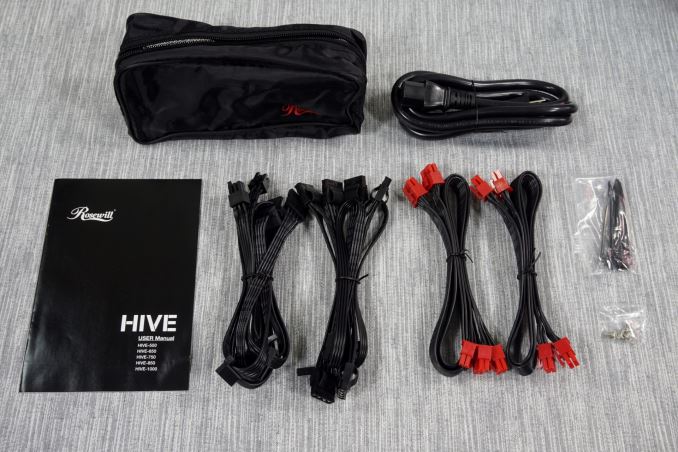The Rosewill Hive 850W PSU Review
by E. Fylladitakis on July 28, 2015 9:00 AM EST- Posted in
- PSUs
- Cases/Cooling/PSUs
- Rosewill
- 850W

Most of our US and Canada based readers are likely familiar with Rosewill. The company started as a subsidiary of Newegg and they were initially focused on producing simple bits and hardware at competitive prices. As the company grew larger and diversified into other segments of the market, they eventually fledged into a stand-alone manufacturer, with myriads of products filling their ranks and exports outside of the North American markets. Our latest review of their products was that of the Photon 1050W PSU a few months ago. Today we are having a look at another one of their PSUs, the Hive 850W.
Unlike the Photon, the Hive is a series primarily focused on combining high power output and aggressive pricing. They are not lacking any tangible features, as they are semi-modular models with a black chassis. However, they appear to be a little behind technologically for new high performance models, they are just 80Plus Bronze certified and rated for continuous output at 40°C. Their retail prices are enticing but not excessively low, with the 850W unit retailing for $100 including shipping. As a result the question we're looking to answer today is whether the performance of the new Hive units can justify their price tag.
| Power specifications ( Rated @ 40 °C ) | |||||
| AC INPUT | 100 - 240 VAC, 50 - 60 Hz | ||||
| RAIL | +3.3V | +5V | +12V | +5Vsb | -12V |
| MAX OUTPUT | 22A | 22A | 70.5A | 3A | 0.5A |
| 140W | 846W | 15W | 6W | ||
| TOTAL | 850W | ||||
Packaging and Bundle
The Hive is supplied in a sturdy cardboard box, with the artwork hinting that the origin of its name comes from the honeycomb finger guard pattern. Some basic specifications about the PSU can be found on the sides and the rear of the box.
Few extra items are bundled with the Hive. Rosewill only supplied the AC power cable, a few cable ties and the mounting screws. However, the modular cables come supplied into a nice reusable pouch with a zipper. The cables are "flat", ribbon-like, with black wires. Red connectors are installed on the PCI Express cables.
| Connector type | Hardwired | Modular |
| ATX 24 Pin | 1 | - |
| EPS 4+4 Pin | 1 | - |
| EPS 8 Pin | 1 | - |
| PCI-E 6+2 Pin | - | 6 |
| PCI-E 8 Pin | - | - |
| SATA | - | 8 |
| Molex | - | 6 |
| Floppy | - | 2 |












24 Comments
View All Comments
DanNeely - Tuesday, July 28, 2015 - link
This is the first PSU I've seen using flat ribbons for the 24pin ATX cable. Is it able to alleviate the stiffness that normally makes the sleeved monster such a pain to route behind things?piasabird - Tuesday, July 28, 2015 - link
Silverstone makes a set of flexible flat ribbon cables that are of a shorter length for use with their fully modular power supplies. Silverstone PP05-E 0.98 ft. Flat Flexible Short Cable Set for SilverStone Modular PSUs. http://www.newegg.com/Product/Product.aspx?Item=N8...DanNeely - Tuesday, July 28, 2015 - link
Do they sell individual cables, IIRC my PSU is a Silverstone and it is modular; but all my smaller cables are the flat type. Only the 24pin legacy cable is the fat sleeved style.Cellar Door - Thursday, July 30, 2015 - link
Thank you Sir!meacupla - Tuesday, July 28, 2015 - link
It has its own set of benefits, but also has some drawbacks.Overall, I think individual strands are the easiest to work with, but only if they neatly come out of the PSU. Otherwise, the ribbon is moderately easier to work with than sleeved.
Impulses - Tuesday, July 28, 2015 - link
I dig that flat ribbon, specially with today's cases that have plenty of cable holes... I still don't get why individually sleeved strand cables got so popular, they look ok if you have combs in them to keep them very straight but with or without they're still bulkier and harder to hide.We moved away from PATA cables for a reason and the current craze over single strand braids basically leaves them looking like fancy PATA cables (that you can't fold as easily as the old thin PATA cables).
meacupla - Tuesday, July 28, 2015 - link
The move away from PATA cables was because of ease of installation, rather than how poorly they could be routed.In fact, PATA cables were a lot easier to work with. Done right, they were far less restricting to airflow than spliced and bundled cables.
extide - Tuesday, July 28, 2015 - link
The move away from PATA had pretty much zero to do with aesthetics or installation ease. It's purely an engineering reason why we moved from a slow parallel bus to a fast serial bus. Those other reasons are purely side benefits.meacupla - Wednesday, July 29, 2015 - link
you say that, but at that point in storage technology, the disks were barely saturating 66Mbps and it took intel, nvidia and VIA quite a while to implement SATA as a native feature in their chipsets.Impulses - Thursday, July 30, 2015 - link
That was my point, we used to splice and play origami with PATA cables to avoid that big chunky flat cable look that the fancy braided cables now end up replicating...